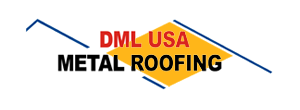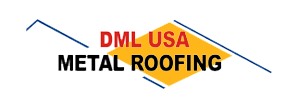Cost difference between metal roof and shingle roof is a crucial consideration for homeowners evaluating their next roofing investment.
– Metal Roofs: Cost approximately $4 to $40 per square foot. Factors such as metal type and roof complexity influence this range.
– Shingle Roofs: Cost roughly $4.50 to $12.25 per square foot, making them a potentially more affordable choice upfront.
Selecting the right roofing material impacts long-term maintenance, durability, and home aesthetics. While metal roofs offer longevity and environmental benefits, shingle roofs are cost-effective and easier to install. However, understanding which option aligns with your needs requires evaluating several factors beyond the initial costs.
My name is Adam Kadziola, and I specialize in exploring cost difference between metal roof and shingle roof. With over 15 years of experience at DML USA Metal Roofing, I am passionate about guiding homeowners through their roof investment journey, ensuring choices that improve value and safety.

Cost Difference Between Metal Roof and Shingle Roof
Metal Roof Costs
When considering a metal roof, you’re looking at an upfront cost of around $4.50 to $16.00 per square foot. This range varies based on the type of metal roofing you choose. For instance, an exposed fastener metal roof is on the lower end, costing about $4.50 to $6.50 per square foot. However, if you opt for a high-end steel standing seam metal roof, expect to pay between $12.00 and $16.00 per square foot.

The material costs for metal roofs are generally higher than shingles because metal is a more durable and long-lasting material. This durability also means less frequent replacements, which can save money in the long run.
Labor costs for metal roofs can be more expensive, too. Installing metal roofing requires specialized skills and more time, making the labor-intensive process pricier compared to shingle roofs.
Shingle Roof Costs
In contrast, asphalt shingles are typically more affordable upfront. They range from $4.00 to $8.00 per square foot. The cost depends on the quality of the shingles. For example, 3-tab shingles, which are the most basic type, cost around $4.00 per square foot. Architectural shingles, which offer better durability and appearance, range from $5.00 to $6.00 per square foot.
Luxury asphalt shingles can go up to $8.00 per square foot or more, but they still tend to be cheaper than most metal roofing options.

The labor costs for shingle roofs are generally lower. Asphalt shingles are easier and quicker to install, which reduces labor time and costs. Many roofing contractors are well-versed in installing shingles, making it a straightforward process.
In summary, while metal roofs have higher upfront costs due to materials and labor, they offer long-term savings through durability and reduced maintenance. Shingle roofs, on the other hand, provide a more budget-friendly initial investment but may require more frequent repairs and replacements over time.
Factors Influencing Roofing Costs
When you’re planning a roof replacement, several factors can influence the total cost. Understanding these can help you make an informed decision.
Roof Square Footage
The size of your roof is a major cost driver. Larger roofs require more materials and labor, which increases costs. But remember, your roof’s square footage isn’t the same as your home’s floor area. Roofs with steep pitches or multiple levels can have significantly more square footage than you might expect.

Roof Accessibility
Roof accessibility can significantly impact costs. A roof that’s easy to access will typically be cheaper to work on. However, if your property has obstacles like fences, dense landscaping, or a lack of nearby parking for trucks, it can make the job more challenging and expensive. Roofers need clear access to deliver materials and dispose of old roofing. Every extra hurdle can add to the labor time and costs.

Roof Complexity
The complexity of your roof’s design also affects costs. More complex roofs, with features like multiple facets, steep pitches, or numerous penetrations (like skylights and chimneys), require more skill and time to replace. Each penetration needs proper flashing to prevent leaks, adding to both material and labor costs.
For example, a simple ranch-style roof with two or four facets will be less expensive to replace than a complex design with multiple angles and features.

In conclusion, while the base cost of materials is important, these factors—roof square footage, accessibility, and complexity—play significant roles in the overall cost of your roofing project. Understanding these can help you budget more accurately and choose the right roofing contractor for your needs.
Pros and Cons of Metal Roofs
Pros of Metal Roofs
Durability
Metal roofs are incredibly durable. They can withstand severe weather conditions like high winds, heavy snow, and even hailstorms. In fact, many metal roofing products have the highest impact resistance ratings. This means fewer repairs and replacements over time, making them a smart investment for the long haul.
Maintenance
Metal roofs require less maintenance compared to shingle roofs. They’re less prone to issues like leaks and damage from the elements. With proper installation, metal roofs can last decades with minimal upkeep.
Energy Efficiency
Metal roofs can help keep your home cooler in the summer. They reflect sunlight, reducing the amount of heat absorbed by your home. This can cut down on cooling costs, which is especially beneficial in hot climates.
Longevity
A metal roof can last 60 years or more, depending on the type of metal used. Some metals, like zinc and copper, can last over a century. This longevity often justifies the higher upfront cost when you consider the lifespan.
Resale Value
Homes with metal roofs can have a higher resale value. Buyers often appreciate the benefits of a long-lasting, low-maintenance roof. Plus, the unique look of metal roofs can add curb appeal.
Eco-Friendliness
Metal roofs are environmentally friendly. They’re often made from recycled materials and can be recycled again at the end of their life. This makes them a great choice for eco-conscious homeowners.
Cons of Metal Roofs
Installation Costs
The cost difference between metal roof and shingle roof is significant, with metal roofs typically costing more upfront. The installation requires skilled professionals, which can further increase costs.
Heating Costs
In colder climates, metal roofs can make homes more expensive to heat. They don’t retain heat as well as asphalt shingles, so heating costs might be higher in the winter months.
In summary, while metal roofs offer numerous advantages in terms of durability, maintenance, and energy efficiency, they do come with higher installation and potential heating costs.
Pros and Cons of Shingle Roofs
Pros of Shingle Roofs
Affordability
Shingle roofs are popular for a reason: they are cost-effective. Asphalt shingles, the most common type, are generally less expensive than metal roofing materials. This makes them an attractive option for homeowners on a budget.
Easy Installation
Installing shingle roofs is typically quicker and less complex than metal roofs. Many roofing contractors are familiar with shingles, which means you’re likely to find more competitive pricing for installation. This ease of installation also means less labor time, further reducing costs.
Warmer in Cold Climates
Shingle roofs tend to retain heat better than metal roofs. This can be a significant advantage in colder climates, as it helps keep heating costs down during the winter months. Homeowners in these areas might appreciate the warmth shingles provide.
Cons of Shingle Roofs
Shorter Lifespan
One of the drawbacks of shingle roofs is their shorter lifespan. While metal roofs can last 60 years or more, shingle roofs typically last around 20 to 30 years. This means you might face more frequent replacements over the life of your home.
Higher Maintenance
Shingles require more maintenance compared to metal. They can slip, disintegrate, or fall off due to weather conditions. Regular inspections and repairs are necessary to keep a shingle roof in good condition, which can add to the overall cost of ownership.
Cooling Costs
In warmer climates, shingle roofs can increase cooling costs. They absorb more heat from the sun, which can make your home warmer and lead to higher air conditioning bills during the summer months. This is something to consider if you live in a hot environment.
In conclusion, while shingle roofs offer benefits like affordability and ease of installation, their shorter lifespan and higher maintenance needs are important factors to consider.
Frequently Asked Questions about Roofing Costs
Cost Difference Between Metal Roof and Shingle Roof
When it comes to the cost difference between metal roof and shingle roof, the upfront price is a major factor. On average, a metal roof can cost between $15,000 and $24,500. That’s significantly more than the $6,000 to $9,800 you might spend on an asphalt shingle roof. However, when you break it down by square foot, the cost range for metal roofing is $4 to $40, while shingles range from $4.50 to $12.25 per square foot.
The initial cost of metal roofing is higher, but its durability often makes it a better investment in the long run. Metal roofs can last up to 60 years, while shingle roofs may need replacement every 20 to 30 years.
Metal Roof vs. Shingles in Hot Climate
In hot climates, the choice between metal roofs and shingles can impact your energy bills. Metal roofs reflect sunlight, which helps keep homes cooler. This can lead to savings of up to 40% on summer cooling costs, according to the Cool Metal Roofing Coalition. Shingles, on the other hand, absorb more heat, which can make your home warmer and increase air conditioning costs.
If you’re looking for energy efficiency in a hot climate, a metal roof might be the better choice. Its ability to reflect heat can not only lower your energy bills but also improve the overall comfort of your home.
Average Cost of Metal Roof on 1,600 Square Foot Homes
For a 1,600 square foot home, the cost of a metal roof can vary widely, depending on factors like the type of metal used and the complexity of the roof design. On average, homeowners might expect to pay between $12,800 and $64,000. This range accounts for both lower-end and high-end materials.
Several factors influence the cost, including roof square footage, accessibility, and the number of penetrations like vents and chimneys. A more complex roof design with steep pitches or multiple angles will also increase both material and labor costs.
Choosing a metal roof for a 1,600 square foot home is a significant investment, but the long-term savings on energy and maintenance can make it worthwhile for many homeowners.
Conclusion
Choosing between a metal roof and a shingle roof is more than just a cost comparison. It’s about understanding your needs and the long-term benefits. At DML USA Metal Roofing, we believe in providing high-quality, durable roofing solutions that stand the test of time.
DML USA Metal Roofing offers products that are not only built to last but also designed to improve your home’s energy efficiency. Our metal roofs reflect sunlight, reducing cooling costs by up to 40% in hot climates. This energy efficiency makes metal roofing an eco-friendly choice that can lower your carbon footprint.
When making your roofing decision, consider factors like durability, maintenance needs, and energy savings. While the initial cost of a metal roof may be higher, its longevity and minimal maintenance can make it a more economical choice in the long run. Plus, metal roofs add significant resale value to your home, making them a wise investment for the future.
For those interested in exploring the benefits of metal roofing further, check out our product offerings. With DML USA Metal Roofing, you’re not just choosing a roof; you’re choosing peace of mind, knowing you’ve invested in quality and reliability.

